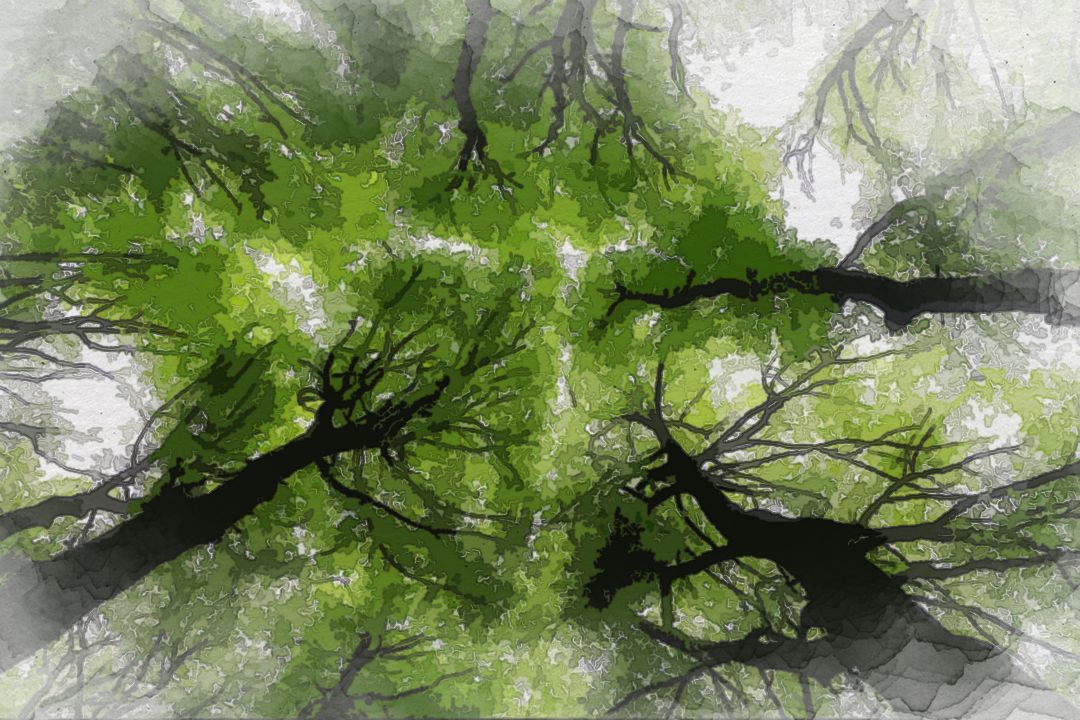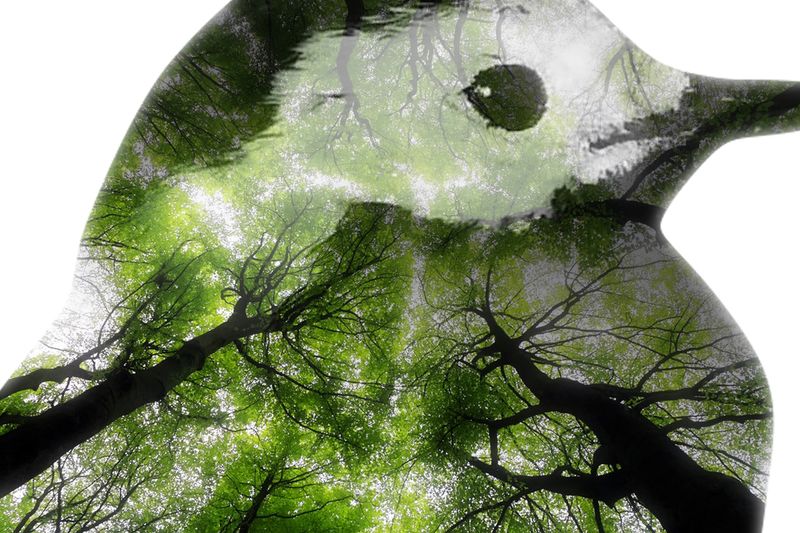'Should' implies Ethics and "ought" to rotate AROUND the passions.

Canopy Conversations and the Wood Birds of Germanic Epic
The Wood Birds of Germanic Epic ruled the canopy in the forest's heart. The observer descended into the green maze, witnessing the interconnected life of the trees. Memories flickered like shadows through the undergrowth, reminiscent of Plato's thoughts on fleeting knowledge. The forest wasn't just a backdrop; it held collective memories in each leaf and branch.
Among the fading memories, a clear truth emerged: Reason is meant to be the servant of passions, serving and obeying them.
Moving deeper, the air thickened with the earthy scent and the Wood Birds' distant melody. The once-distant canopy enveloped the observer, revealing a diverse ecosystem beneath. Trees stood as silent witnesses, their roots tangled with untold stories of growth and decay.
Stirred by an unseen force, memories continued to surface – glimpses of moments, a glance between creatures, the rustle of leaves. The forest was a living memory, recording the tales of its inhabitants.
In this revelation, the observer felt the delicate balance between reason and passion in the pulse of the forest. The rustling leaves and whispered breezes affirmed this harmony, a rhythm defining the dance of life within the wooded embrace.
Wandering deeper, surrounded by Wood Birds' whispers, the observer became part of the living chronicles. The air hummed with a symphony of rustling leaves, a collective voice narrating tales of ages past. In this ancient haven, the observer became an integral part of the dance of life and memory, where the truth about reason and passion was etched into the woodland tapestry.
Reason is, and ought only, to be the slave of the passions and can never pretend to any other office than to serve and obey them.
— David Hume (1711-1776)
The forest's revelations echoed through the quiet rustling of leaves and Wood Birds' distant calls. The inconveniences over time were recognized as the necessary cost for the breathtaking beauty woven into existence.
Shifting focus, the observer stood under the lush canopy. The once-distant ceiling now arched overhead, a vibrant mix of colours celebrating photosynthesis – the essence of life. The forest's crown displayed a range of hues, each telling a story of growth, sunlight, and the cycle of life and decay.
The observer marvelled at the interplay of colours, realizing each shade contributed to the vitality of the forest. The lush foliage seemed to breathe, a rhythmic dance orchestrated by the Wood Birds above.
Sunlight filtered through leaves, casting patterns on the forest floor. The inconveniences were now seen as threads in the tapestry of life, contributing to the vibrant ecosystem thriving in the woodland sanctuary.
Beneath the resplendent canopy, the observer actively participated in the celebration of life. The forest's display was a reminder that despite challenges, the beauty of existence persisted, resilient and ever-renewing. Surrounded by the harmonious symphony of nature, the observer stood beneath the living kaleidoscope, part of the intricate dance of life within the forest's embrace.
Further, the dignity of the science itself seems to require that every possible means be explored for the solution of a problem so elegant and so celebrated.
— Carl Friedrich Gauss (1777-1855)
Amidst the resplendent canopy, the dignity of science reverberated through the vibrant hues of the forest. The sunlight filtered through the leaves, casting a luminous glow that seemed to ignite the very essence of exploration. Each hue beckoned, inviting scientists and curious minds to delve into the intricacies of sustaining life within the forest's embrace.
The symphony of colours served as an alluring backdrop, symbolizing the diverse facets of the scientific pursuit. The greens spoke of growth and renewal, the blues hinted at the mysteries of the ecosystem's interconnectedness, and the yellows reflected the energy pulsating through the foliage. It was like nature was a canvas waiting for scientists to unravel its secrets.
As the observer marvelled at the spectacle, the Wood Birds, guardians of this enchanting realm, entered the scene. With wings carrying them gracefully from branch to branch, they navigated the kaleidoscope of colours, leaving trails of motion amidst the symphony. Their presence added a dynamic element to the living tapestry, their ethereal melodies harmonizing with the rustling leaves and creating a sensory masterpiece.
These Wood Birds, with their iridescent plumage, became emissaries between scientific exploration and the natural world. The forest responded to their flight, the colours intensifying and shifting in rhythm with their movements. It was as if the Wood Birds were the conductors of this vibrant orchestra, guiding the observer through the chapters of the forest's scientific narrative.
As the Wood Birds flitted through the foliage, carrying their wings through the symphony of colours, the observer couldn't help but feel a sense of reverence for the guardians of this enchanting realm. Their movements were not just flight; they were a dance that bridged the gap between the scientific pursuit and the innate wisdom of the forest. Now participating in this visual and auditory feast, the observer stood in awe of the seamless integration of science and nature.
In this living laboratory, beneath the resplendent canopy, the observer witnessed a convergence of scientific dignity and the Wood Birds' graceful dance. The vibrant hues, the fluttering wings, and the melodic symphony of colours became a canvas where exploration and natural beauty coexisted, inviting all to partake in the celebration of life within the forest's embrace.
There is no moral precept that does not have something inconvenient about it.
— Denis Diderot's (1713-1784)
As the observer continued to navigate the labyrinthine depths of the forest, the intricate dance of order and chaos unfolded with every step. The inconveniences, like threads in the tapestry of nature's intricate design, became more apparent. Fallen branches, tangled vines, and uneven terrain spoke to the challenges inherent in the delicate balance between growth and decay, order and randomness.
The forest, with its raw and unfiltered beauty, presented a paradox. The observer marvelled at the dappled sunlight filtering through the canopy, casting enchanting patterns on the forest floor. Yet, amidst this captivating scenery, the gnarled roots and uneven landscape served as constant reminders of the challenges that nature endured to maintain its delicate equilibrium.
In this symphony of existence, where every rustle of leaves and chirp of Wood Birds added to the chorus, the observer grappled with the juxtaposition of beauty and complexity. The inconveniences woven into the forest fabric demanded acknowledgment and respect as integral components of the natural order.
Yet, within this harmonious chaos, a sobering truth lingered: tyranny is always better organized than freedom. The forest seemed to echo the sentiment as the observer pondered this paradox. The organized chaos of the woodland, with its interconnected web of life, presented a stark contrast to the freedom of untamed wilderness.
The observation prompted reflection on the structured nature of tyranny compared to the apparent disorder of freedom. Standing like sentinels in regimented rows, the trees appeared more organized than the wild undergrowth where nature followed its unbridled course. In its seeming chaos, the order of the forest hinted at the tyranny of a system designed for survival, where every organism had its place and purpose.
As the observer embraced the truth that tyranny thrived on organization, a nuanced understanding of the forest's complexities emerged. Rather than detracting from the beauty, the inconveniences contributed to the intricate balance that allowed life to flourish. The gnarled roots, fallen branches, and uneven terrain were not flaws but integral components of a system that thrived on order and freedom.
In this realization, the observer deeply appreciated the forest's inherent wisdom. The sobering truth became a guide, prompting the observer to discern the organized chaos and recognize the symbiotic relationship between structure and freedom within the forest's embrace. The tapestry of nature, woven with inconveniences, unfolded as a testament to the delicate dance between order and chaos, a dance that allowed life to thrive in its multifaceted beauty.
Tyranny is always better organized than freedom.
— Charles Péguy (1873-1914)
As the observer continued their journey through the forest, the regulated chaos became more pronounced. The dance between order and freedom unfolded in the rustling leaves, the interplay of shadows, and the orchestrated movements of the Wood Birds above. It was a microcosm reflecting the universal struggle between structure and the untamed wilderness, encapsulating the eternal battle between the constraints of a predetermined order and the boundless freedom inherent in the wild.
The Wood Birds, with their melodic songs, became the living embodiment of this ongoing struggle. Their tunes resonated through the forest, each note echoing the tension between structure and freedom. The observer, enveloped in this symphony, witnessed the birds flitting from branch to branch, navigating the regulated chaos with a grace that transcended the confines of their structured surroundings.
In this setting, the short story continues to unfold organically. Canopy Conversations echoed through the foliage, a dialogue between the leaves, the Wood Birds, and the observer. The epic journey of the Wood Birds, their wings carrying them through the constraints of the forest's design, became an allegory for the larger narrative unfolding in the observer's mind.
The philosophical reflections on reason, inconvenience, scientific pursuit, and the age-old struggle between tyranny and freedom seamlessly interwove with the forest's natural drama. Once perceived as hurdles, the inconveniences became integral to the evolving story. The observer, now a participant in the narrative, saw these inconveniences as stepping stones, adding depth and authenticity to the intricate tapestry of life within the forest.
Deep in the heart of the woodland, the observer became enmeshed in the unfolding tale, navigating the twists and turns of the forest's intricate maze. The observer's footsteps resonated with the forest's heartbeat, and every rustle of leaves whispered secrets of the past and possibilities for the future.
Captivated by the essence of the competition, the observer's story aimed not only to win but also to immerse the audience in the rich and immersive tapestry of Canopy Conversations, Wood Birds' melodies, and the eternal struggle between order and freedom. With its regulated chaos, the forest became the backdrop for a narrative that sought to resonate with the depths of the competition, capturing the essence of life within the canopy's embrace in a way that transcended mere words.

The planksip Writers' Cooperative is proud to sponsor an exciting article rewriting competition where you can win over $750,000 in prize money.
Figures of Speech Collection Personified
Our editorial instructions for your contest submission are simple: incorporate the quotes and imagery from the above article into your submission.
What emerges is entirely up to you!
Winners receive $500 per winning entry multiplied by the article's featured quotes. Our largest prize is $8,000 for rewriting the following article;

At planksip, we believe in changing the way people engage; at least, that's the Idea (ἰδέα). By becoming a member of our thought-provoking community, you'll have the chance to win incredible prizes and access our extensive network of media outlets that will amplify your voice as a thought leader. Your membership truly matters!


